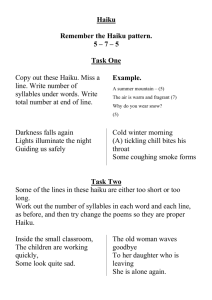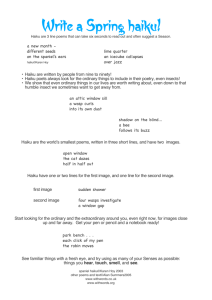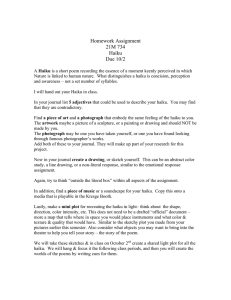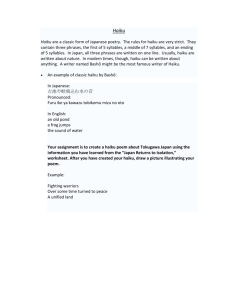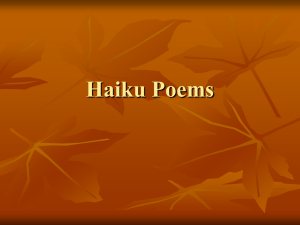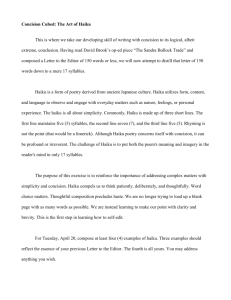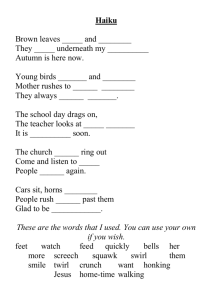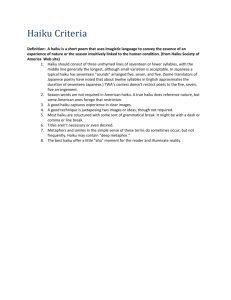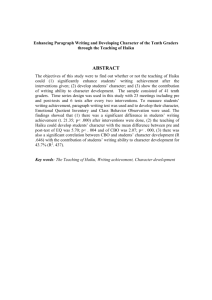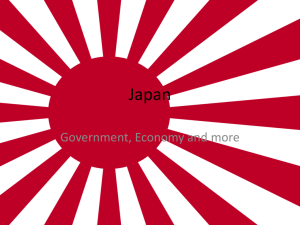A traditional Japanese haiku is a three
advertisement
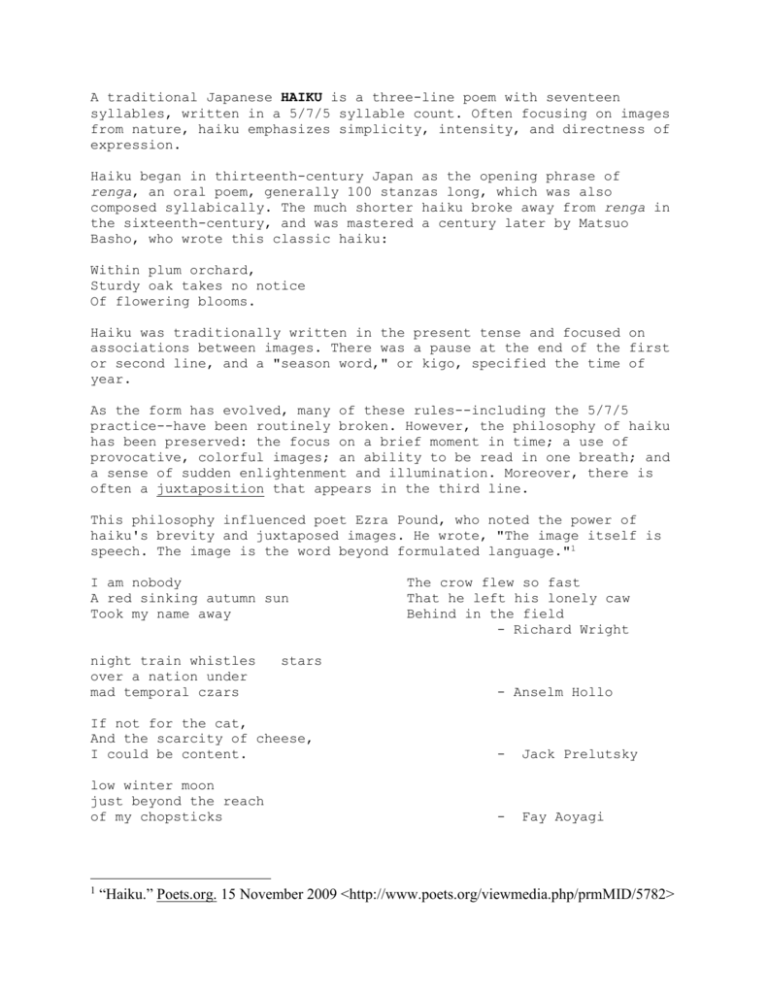
A traditional Japanese HAIKU is a three-line poem with seventeen syllables, written in a 5/7/5 syllable count. Often focusing on images from nature, haiku emphasizes simplicity, intensity, and directness of expression. Haiku began in thirteenth-century Japan as the opening phrase of renga, an oral poem, generally 100 stanzas long, which was also composed syllabically. The much shorter haiku broke away from renga in the sixteenth-century, and was mastered a century later by Matsuo Basho, who wrote this classic haiku: Within plum orchard, Sturdy oak takes no notice Of flowering blooms. Haiku was traditionally written in the present tense and focused on associations between images. There was a pause at the end of the first or second line, and a "season word," or kigo, specified the time of year. As the form has evolved, many of these rules--including the 5/7/5 practice--have been routinely broken. However, the philosophy of haiku has been preserved: the focus on a brief moment in time; a use of provocative, colorful images; an ability to be read in one breath; and a sense of sudden enlightenment and illumination. Moreover, there is often a juxtaposition that appears in the third line. This philosophy influenced poet Ezra Pound, who noted the power of haiku's brevity and juxtaposed images. He wrote, "The image itself is speech. The image is the word beyond formulated language."1 I am nobody A red sinking autumn sun Took my name away night train whistles over a nation under mad temporal czars The crow flew so fast That he left his lonely caw Behind in the field - Richard Wright stars - Anselm Hollo If not for the cat, And the scarcity of cheese, I could be content. - Jack Prelutsky low winter moon just beyond the reach of my chopsticks - Fay Aoyagi 1 “Haiku.” Poets.org. 15 November 2009 <http://www.poets.org/viewmedia.php/prmMID/5782>
